Hoplo catfish (Megalechis thoracata) is a freshwater aquarium fish from the Callichthyidae family (armored catfishes). This is an undemanding and peaceful (which is a rare case among catfish), good-looking fish. Black hoplo catfish is one of the most popular aquarium catfish species. Further in the article, you’ll find out how to keep hoplo catfish, feed it, select tank mates, and breed it.
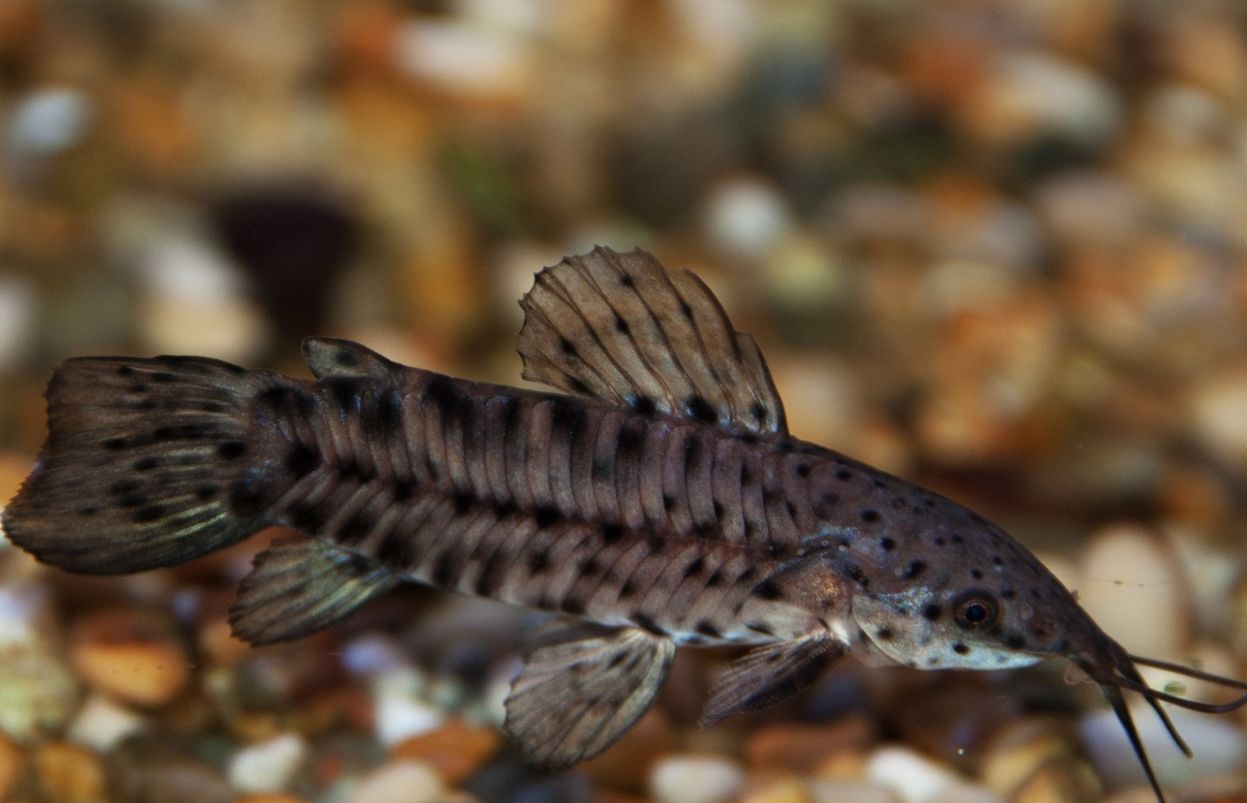
Contents
Habitat in the wild
Black marble hoplo inhabits central and North parts of South America: in the Amazon and Orinoco River basin, upstreams of the Paraguay River basin, littoral rivers of North Brazil and Guianas, some islands close to the South American coast. During the last decades, not without aquarists help, this kind was introduced into Florida waters, where it is doing quite well, and nowadays, it is a rival to some local species.
Megalechis thoracata dwell both in running water habitats and some small, silt up, and thickly planted lakes after the rivers’ overflow. You can encounter them even in brackish waters exposed to oceanic tides. However, due to excellent adaptability and anatomy features, the fish can survive where other fishes die.
Some information sources say that hoplo catfish are piranhas symbiont in the wild: piranhas don’t treat them as food and even allow them to eat parasites from their skin. Unfortunately, it is impossible to find proof of this information.
Hoplo catfish got its name since, in the beginning, it was considered to belong to the Hoplosternum genus. Its specific name Hoplosternum thoracatum, was valid up to the end of 1997 when after regular revision performed by Roberto Reis, he divided the Hoplosternum genus into three standalone genera, and the species were redistributed between them.
Black marble hoplo was classified as Megalechis and received its new scientific name Megalechis thoracata. The word Megalechis is translated from Greek as a large plate. In this name, Reis reflected one of the fish structure’s distinctive features – its body is covered with rigid protective plates.
| Characteristic | Description |
|---|---|
| Scientific Name | Megalechis thoracata |
| Common Names | Hoplo Catfish, Hoplosternum, Spotted hoplo catfish |
| Origin | South America, mainly in the Amazon River Basin |
| Size | Up to 4-6 inches (10-15 cm) |
| Lifespan | 5-8 years (approximately) |
| Temperament | Peaceful and non-aggressive |
| Tank Size | 20 gallons or more (depending on the number) |
| Water Parameters | pH: 6.5-7.5, Temperature: 72-79°F (22-26°C) |
| Water Hardness | Soft to moderately hard |
| Diet | Omnivorous – accepts both live and prepared food |
| Feeding Frequency | 1-2 times a day |
| Tank Setup | Provide hiding spots with driftwood and caves |
| Behavior | Mostly bottom-dwelling and nocturnal |
| Compatible Tankmates | Peaceful community fish |
| Breeding Difficulty | Moderate |
| Special Considerations | May have sharp pectoral spines for defense |
Description
Wild spotted hoplo catfish grow up to 16 cm long, while in a tank, their size may seldom reach 20 cm. It has an oblongated body, and a bit flattened from sides and a rather wide head with two pairs of barbs on its upper jaw and one on the under-jaw. Its back is a bit updrawn, and the abdomen is flat. Two raws of rigid bony plates are located along the fish sides. There is a fatty fin on its back.
The basic body color is brown. Young species have lighter coloring while adults are dark brown. Small ungeometrical dark spots are scattered over the fish’s body. Its abdomen is almost white. There is albino spotted hoplo catfish with milky-white coloring and dark spots over the body.
Besides breathing using gills, hoplo catfish has so-called intestinal respiration, and therefore like climbing perch (pearl gourami, kissing gourami, paradise fish), they get to the water surface from time to time to gasp another portion of atmospheric air.
As most of the widespread species in the wild, this catfish has many kinds that insignificantly differ from each other by their coloring and body shape. For this reason, the hydrochemical parameters of waters where these species live in the wild are quite different as well.
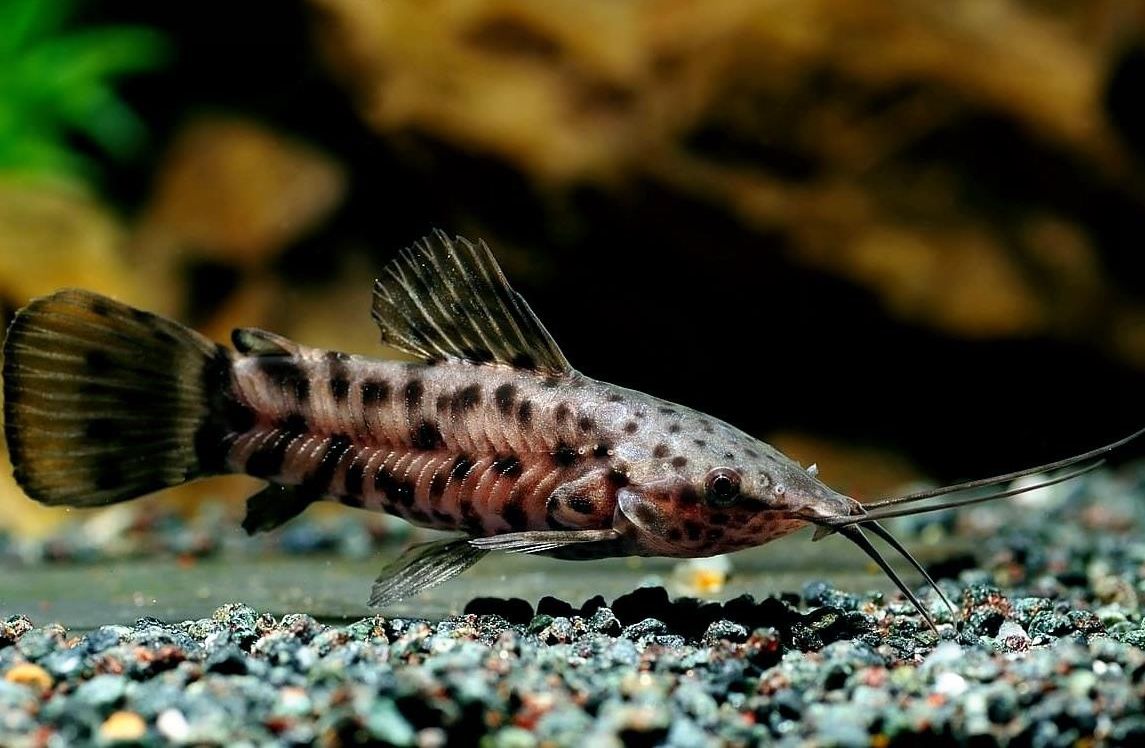
Difficulties in keeping
This is a rather undemanding kind of aquarium catfishes. Among their main attractive features are their attractive appearance, plainness in keeping, and calm temper. The fish can be recommended for both newbies and experienced aquarists.
Hoplo catfishes have a twilight mode of life, and they become active once it gets dark. Unlike other catfishes, which spend most of their life in bottom water layers, they often swim to the middle and upper layers and even take food from the water surface.
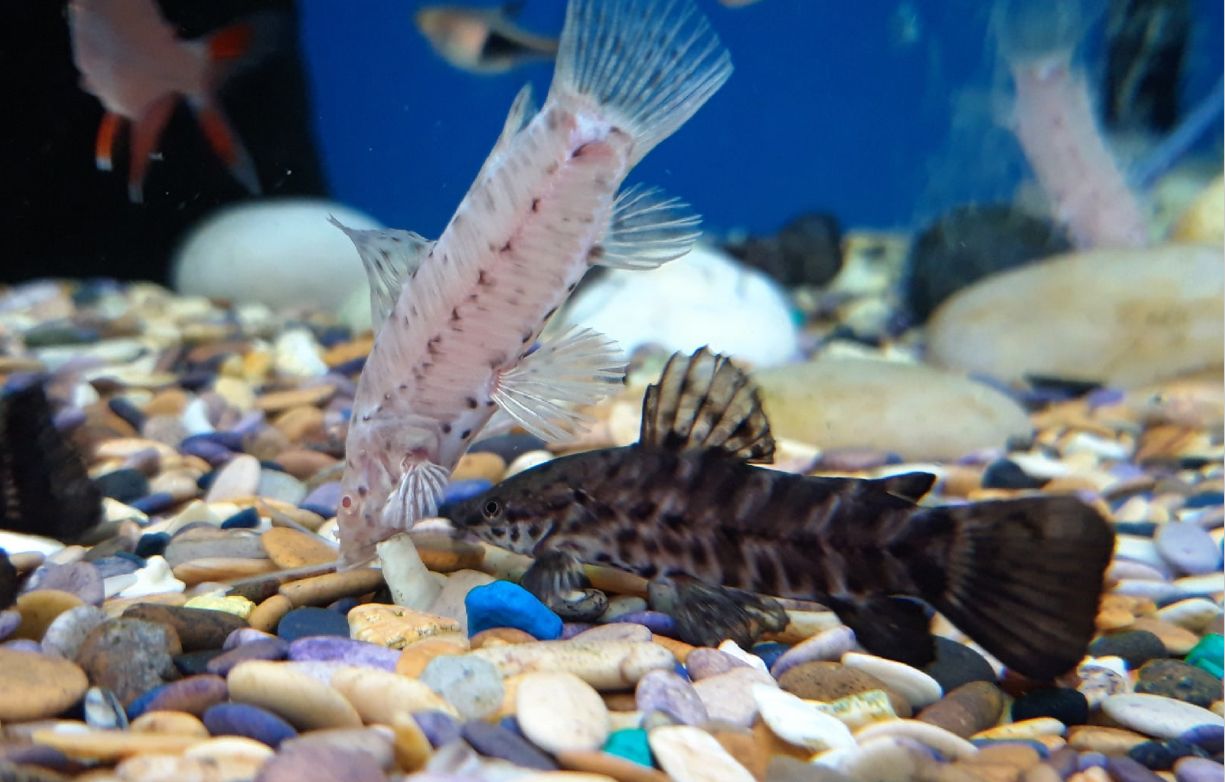
Care and keeping in a tank
Lifespan
Hoplo catfish lifespan, to a large extent, depends on their tank conditions. Thus, in the wild, the fish lives from 4 to 6 years. In a tank, its lifespan is longer, and sometimes it is 10 years and more.
Tank size
For a couple of spotted hoplo catfishes, a tank with a large bottom square is recommended, at least 40 gallons (150 liters) capacity or more. Providing a larger tank allows for better water quality and more stable conditions. Additionally, having extra space enables you to add suitable tank mates and create a more diverse and interesting environment for your hoplo catfish.
Water parameters
Considering the widespread distribution of Megalechis thoracata, you can guess that they aren’t very demanding in water quality. Preliminary settled tap water will do for them. Its temperature should be 22–30 °C (72–86 °F), hardness and acidity don’t matter much, the main thing is that these parameters don’t exceed reasonable limits: general hardness GH may be up to 20°, pH should be within the range from 5.8 to 7.5.
Tank setup: decorations and plants
The tank should be covered from the top since the fish, when getting to the water surface to gasp some air, sometimes jump out of the water.
Large-grained sand and small smooth pebbles will do as the tank bottom substrate. The fish is a bottom-dwelling one, and they dig the bottom all the time looking for food. Don’t forget to provide them with enough shelters made of stones, snags, and caves.
As for the tanks plants, you should select the ones with strong root systems – anubias, cryptocoryne, etc. Hoplo catfishes ignore the tank plants completely. But taking into account their constant bottom digging, plants with weak roots will float all the time. It will be good to put some fluctuant on the water surface (amazon frogbit, water lettuce, etc.) to create dim light in the tank.
Filtration
The tank should have a canister filter with high capacity since the fish like clean and rich in oxygen water. Make sure they have access to the water surface constantly because even in a well-aerated tank, hoplo catfish will go to the water surface from time to time for a gasp of air. The tank should have lighting of moderate intensity. Once a week, you should renew 20% of the water to avoid the accumulation of toxic nitrogen compounds.
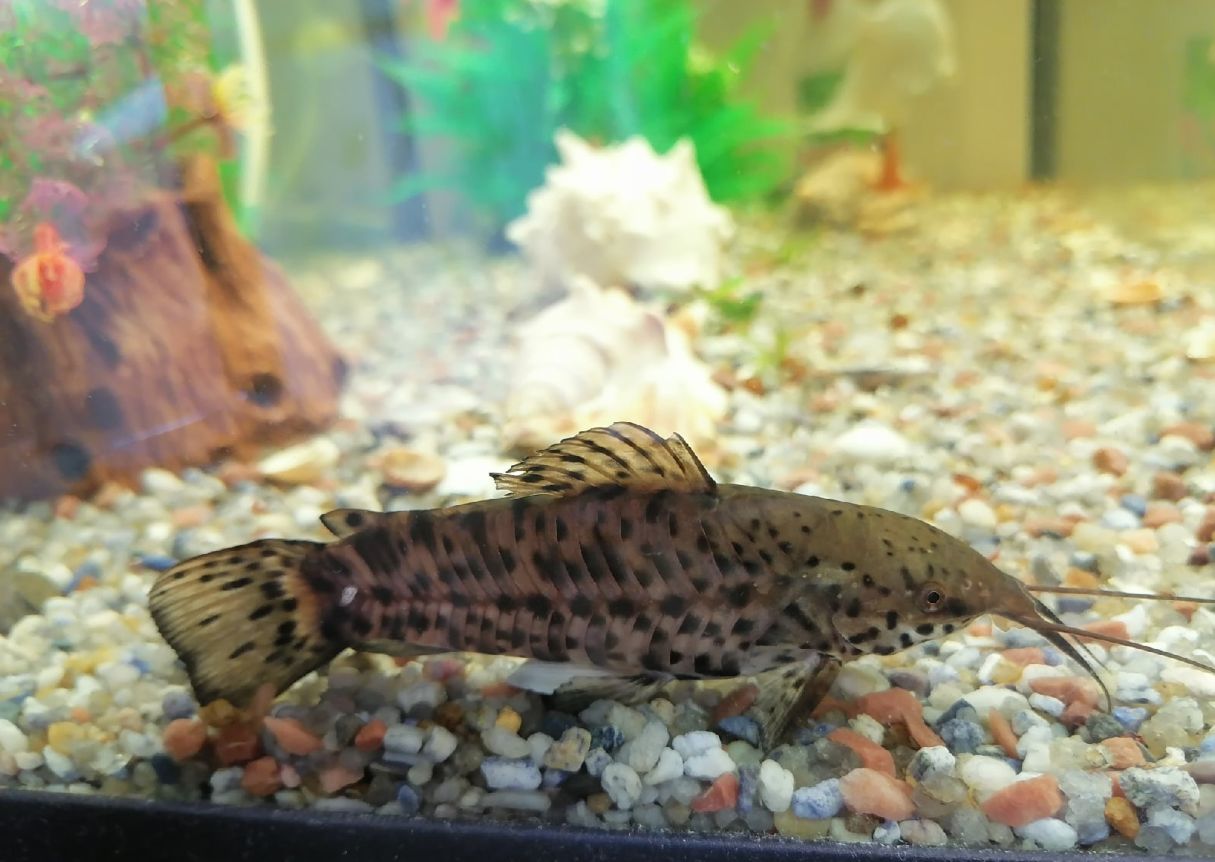
Diet
Hoplo catfishes are omnivorous. In their natural habitat, they scavenge for food on the riverbed and consume a wide range of food items. Wild species prefer feeding on various bottom crustaceans, maggots, detritus, and vegetable remains. Their diet may include both live and artificial food such as various pellets that drown made especially for catfish.
High-quality sinking pellets and flakes formulated for omnivorous fish are a good staple diet. Make sure the pellets sink to the bottom since hoplo catfish are bottom-dwelling fish. Some specialty catfish diets are available, formulated to meet the dietary needs of catfish species, including hoplo catfish.
Don’t forget that when keeping catfishes in a community tank, they successfully eat food leftovers that other tank dwellers didn’t eat.
Tank mates
In a tank, spotted hoplo catfishes proved to be not picky and enduring tank dwellers. In the wild, they often stay in large schools that sometimes are more than a thousand species. For this reason, in a tank, it is recommended to keep them in a small group. At that, only one male should be in it. Otherwise, during the spawning period, they may show aggression towards each other to define the dominating species, and as a result, the weakest one may be killed.
However, hoplo catfish isn’t aggressive towards other tank dwellers. You can keep them with betta fish, black tetra, cardinal tetra, cherry barb, dwarf gourami, endler’s guppy, guppy, glofish, glowlight tetra, harlequin rasbora, kuhli loach.
Can hoplo catfish live with goldfish? Yes, but there are some advantages and disadvantages in this case. As for the advantages, goldfish leave quite many leftovers and waste that hoplo catfish will eat. The drawback is that colder water is required for keeping goldfish, and although hoplo catfish can stand abrupt water temperature changes, but yet this is a tropical fish.
It may have conflicts with its tank mates only when the keeping conditions are violated. If the tank volume is too small, adult species may start chasing other bottom-dwellers, for example, clown loach or yoyo loach – they may have territory conflicts. However, this is true only for large species since they show no aggression towards other small-sized catfishes. For example, you can often see a hoplo catfish dwelling with corydoras.
The high adaptability of black marble hoplo allows it to live with almost any fish kind, including large-sized and aggressive ones, namely, cichlids of Central America. Often this is one of few fishes that can dwell together with such cichlids as jaguar cichlid, oscar fish, texas cichlid, or flowerhorn. Hoplo catfish has its protective plates, which protect it, and it dwells on the tank bottom where it is seldom bothered by its aggressive neighbors. Nevertheless, during the spawning period, they may suffer from cichlid attacks.
However, hoplo catfish feels more comfortable with African cichlids since they can’t harm them. They only nip its long barbs.
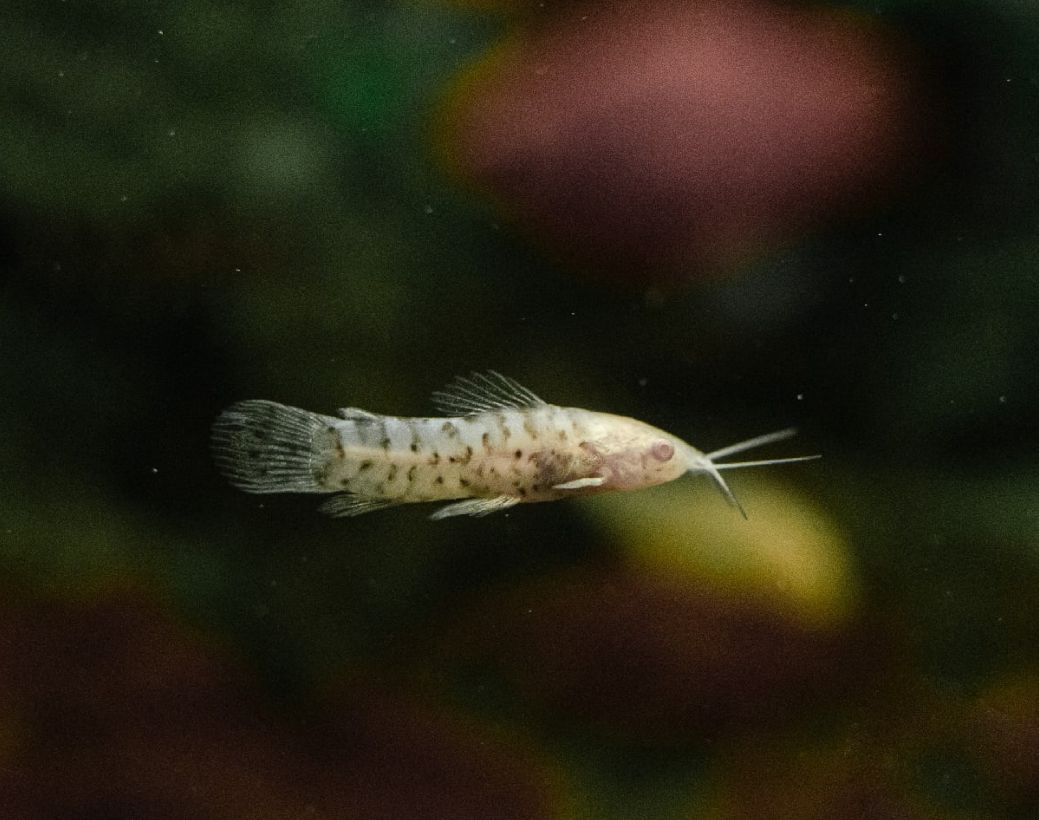
Gender differences: male vs female
Hoplo catfishes become reproductive at the age of 8-10 months. Males are a bit smaller than females. Males are a bit smaller than females. During the spawning period, the milk-white abdomen of the adult males becomes bluish. Reproductive females have their abdomen of the same color at any time.
The most reliable way of their sex identification is based on their pectoral fins appearance. Males have triangular-shaped elongated pectoral fins with thickened first ray. During the spawning period, it becomes orange. Young males and females have oval-shaped pectoral fins, and the 1st ray doesn’t differ from others.
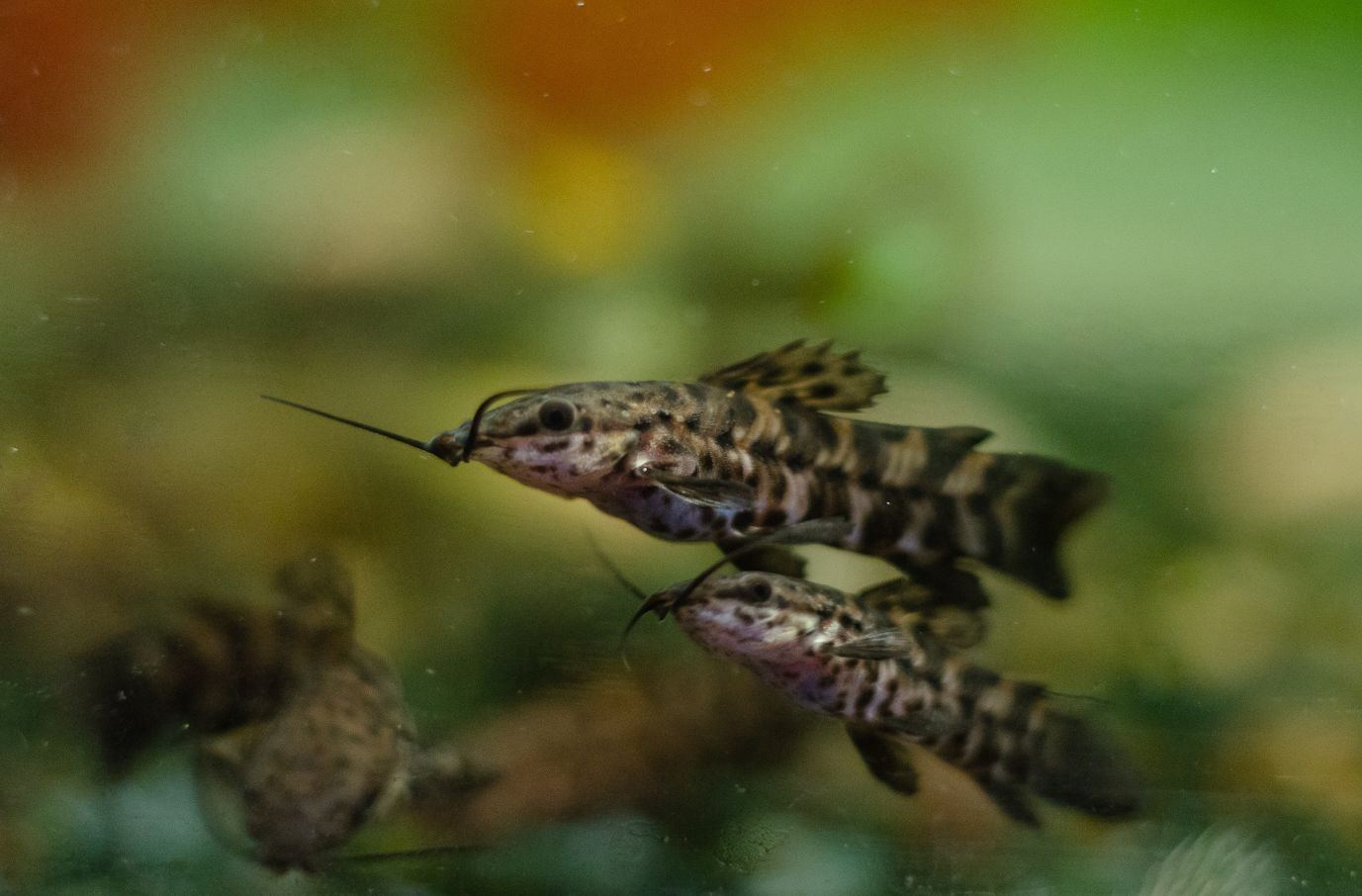
Breeding
Once they become reproductive at 8-12 months, spotted hoplo catfishes sometimes breed in a community tank.
But for stable breeding, a tank from 50 liters capacity is required. Water parameters in a spawning tank should be the following: hardness not higher than 8 dGH, pH 6.5-7.0, temperature 25-27 °C.
The fish spawn in couples. The couples are formed on their own in the fish group. To stimulate spawning, the water temperature is first 3-5 °C decreased by replacing part of it with cooler water. And then the temperature is raised.
Besides decreasing the temperature, another signal for spawning is atmospheric pressure decrease; thus, it is recommended that the spawning coincides with cyclone passage. For successful spawning, preparing the breeders in advance is important. You should provide them with a diversified diet based on the food of animal origin. It is important to rotate the types of food. At that, you should keep in mind that food leftovers shouldn’t spoil the tank water.
Hoplo catfish have non-typical for catfishes way of spawning. The male builds a bubble nest on the water surface.
In the wild, large fluctuant leave serves as a frame for the nest. Many aquarists use a piece of foam plastic or a plastic cap that floats well and are good for the nest frame.
The male builds the nest for several days and sometimes uses small parts of the plants for this. Each bubble is covered with sticky slime that ensures they stick together and won’t fall apart in several days.
As a result, the nest is about 2.5 cm high or higher, and its square may take up to one-third of the tank surface.
Once the nest is done, the male starts chasing the female until she returns the love and follows him to the nest. The couple is under the nest and looks like the letter T, and the female is the upper part of the letter. It lays about a dozen of orange sticky eggs into its abdominal fins put together and then lays a layer of eggs in the nest and swims away. The male takes her place right away and fertilizes the eggs. The process continues until there are almost 500 eggs in the nest.
After the spawning is over, the male wards the female off the nest. Now you should remove her from the spawning tank since the male will guard the clutch and attack her as well as other moving objects (an aquarist’s hand and a scoop-net).
Hoplo catfishes may spawn several times with a break of about 1-3 weeks. While taking care of the eggs, the male doesn’t eat, so there is no need to feed him. Also, he mends the nest from time to time, producing new portions of bubbles if necessary and putting the eggs back if they fall from it. If some eggs are drawn, they won’t die, and the larvae will hatch from them when the time comes.
Eggs incubation depending on the water temperature, continues from 3 to 5 days.
The hatched larvae are about 6 mm long, their barbs and fins are already seen. At this stage, the male should be removed from the tank. The larvae stay in the nest for about two days more until they eat their yolk sacs.
After this, completely formed juveniles get to the bottom and start swimming, looking for food. Since this moment, you should feed them several times a day with brine shrimp nauplii or special food for juveniles.
In the tank with juveniles, the lighting should be dim. The juveniles grow fast, and in 8 weeks, they grow to be about 4 cm long. From this moment, you can feed them with an adult species diet.
If the spawning tank is spacious enough, several fish couples can breed in it at the same. To avoid fights among males for spawning substrate, you should put more leaves imitations than the number of males in the tank. Hoplo catfishes don’t eat their larvae and juveniles.